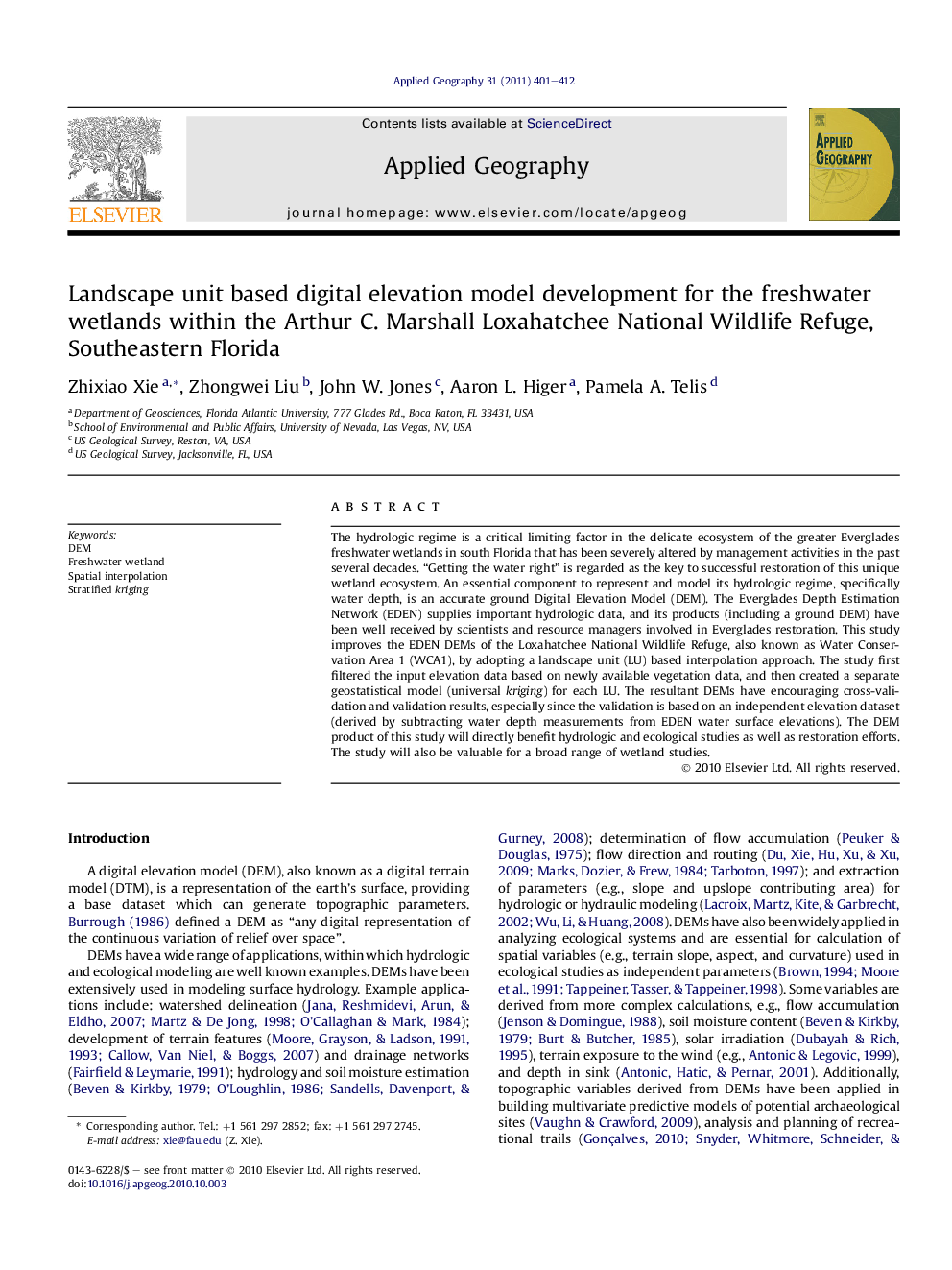| Article ID | Journal | Published Year | Pages | File Type |
|---|---|---|---|---|
| 83751 | Applied Geography | 2011 | 12 Pages |
The hydrologic regime is a critical limiting factor in the delicate ecosystem of the greater Everglades freshwater wetlands in south Florida that has been severely altered by management activities in the past several decades. “Getting the water right” is regarded as the key to successful restoration of this unique wetland ecosystem. An essential component to represent and model its hydrologic regime, specifically water depth, is an accurate ground Digital Elevation Model (DEM). The Everglades Depth Estimation Network (EDEN) supplies important hydrologic data, and its products (including a ground DEM) have been well received by scientists and resource managers involved in Everglades restoration. This study improves the EDEN DEMs of the Loxahatchee National Wildlife Refuge, also known as Water Conservation Area 1 (WCA1), by adopting a landscape unit (LU) based interpolation approach. The study first filtered the input elevation data based on newly available vegetation data, and then created a separate geostatistical model (universal kriging) for each LU. The resultant DEMs have encouraging cross-validation and validation results, especially since the validation is based on an independent elevation dataset (derived by subtracting water depth measurements from EDEN water surface elevations). The DEM product of this study will directly benefit hydrologic and ecological studies as well as restoration efforts. The study will also be valuable for a broad range of wetland studies.
Research highlights► Developed a landscape unit based DEM for a lowland freshwater wetland system with extreme flat terrain, based on an innovative elevation dataset, which will benefits the ongoing Everglades wetland ecosystem restoration science and management, as well as other wetland study. ► Demonstrated the benefit of stratified kriging for terrain characterization at target strata. ► Examined the feasibility of using the correlation between vegetation and hydroperiods for wetland DEM refinement. ► Illustrated the advantage of wetland DEM assessment with a secondary, but independent field measured elevation dataset.
